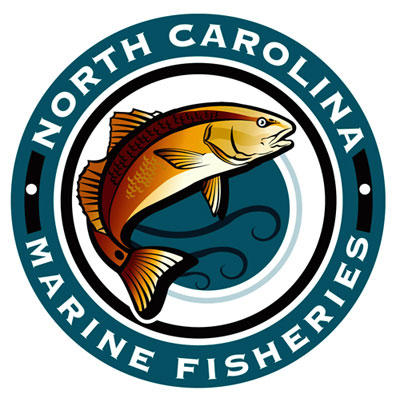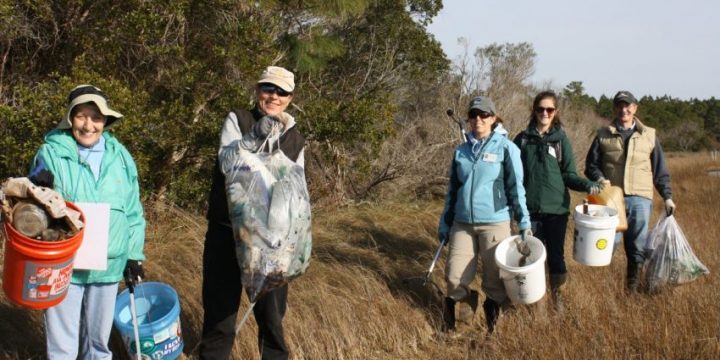
Updated March 7, 2019: The North Carolina Coastal Federation, North Carolina Sea Grant, Onslow County Solid Waste Department and North Carolina Coastal Reserve met Feb. 28 for the North Carolina Marine Debris Action Planning Workshop at the Duke Marine Lab in Beaufort.
The group met to learn about, review and provide input on the draft N.C. Marine Debris Action Plan, and build upon work conducted during the February 2018 Debris-Free NC workshop. The Action Plan will complement the Southeast Regional Marine Debris Plan, coordinated by the National Oceanic and Atmospheric Administration’s Marine Debris Program.
Supporter Spotlight
Originally published March 15, 2018
BEAUFORT – More than 40 stakeholders representing local and state governments, environmental groups and other nonprofit organizations are using a new approach to create a plan to manage marine debris such as consumer trash, storm debris and lost, abandoned and derelict fishing gear and vessels littering the coast.
These stakeholders met in February at the NOAA Fisheries Beaufort Lab for the first Debris-Free NC Collaborative Workshop with the goal of creating an action plan using “Strategic Doing,” a trademarked strategy discipline developed by Purdue University that enables loosely connected groups or individuals to collaborate efficiently and effectively while working toward a common goal.
In addition to the group meeting to begin developing a plan to reduce, prevent and remove marine debris, the stakeholders met to discuss the first draft of “The State of Marine Debris in North Carolina: An Assessment of Prevention and Removal Efforts,” a document based on data collected from online searches, interviews with stakeholders and an online survey.
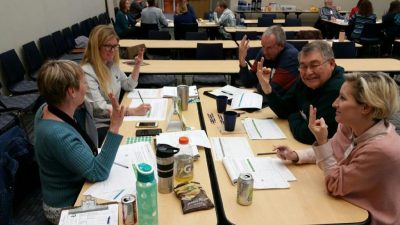
The members of the Reduction Strategy Planning Team — Lisa Rider with Keep Onslow Beautiful and N.C. Marine Debris Symposium, Gloria Putnam with North Carolina Sea Grant, Paula Gillikin with North Carolina Coastal Reserve & National Estuarine Research Reserve and Sara Hallas, Rachel Bisesi and Jessica Gray, all with North Carolina Coastal Federation — have been working together since 2017 to illustrate and evaluate the extent of marine debris and investigate current management efforts directed at preventing and cleaning up debris. The group also organized the workshop.
Supporter Spotlight
“Marine debris is a concern because it can negatively impact community health, industry such as coastal tourism, environmental quality and wildlife. Sea Grant’s interests in marine debris center on helping to better understand the sources and impacts of marine debris and helping partners identify best practices to eliminate them,” Putnam explained.
Hallas, coastal education coordinator with the federation, told the group during the workshop that with offices in Dare, Carteret and New Hanover counties, the nonprofit organization’s work to protect the water quality of all 20 coastal counties sparked the initiative to tackle marine debris.
This led to organizing cleanups and similar projects, which generated great response from the community and volunteers, but also concern over duplicating efforts of other organizations, she said. As a result, marine debris prevention and removal became a part of the federation’s overall goal, which it is approaching through education and messaging, removal projects and advocacy for better policy.
Hallas said that, regarding the first draft of the document, “The State of Marine Debris in North Carolina: An Assessment of Prevention and Removal Efforts,” the strategy team has been researching and gathering facts to determine what steps are being taken to tackle marine debris and to build a common goal of a marine debris-free coast.

“Our first objective when we got together was to complete an assessment of this marine debris prevention and removal efforts,” she said. “We want to continue over the next months in an effort to finalize the assessment that we’ve put together … and a goal of having that develop into a plan by the end of this year or early next year.”
Gloria Putnam, Coastal Resources and Communities Specialist with North Carolina Sea Grant, North Carolina State University, explained the Strategic Doing process during the workshop before the stakeholders split into six small groups to brainstorm on a project that they could work on while an overall plan is being developed.
She said the benefit of using Strategic Doing for a loosely connected network, like the one in place for the marine debris workshop, is that stakeholders come together and move forward to get more done while paying attention to time and resource limitation.
She explained in a follow-up email that she attended training for Strategic Doing in the fall of 2017 with other Sea Grant staff, and “Subsequently recommended that we try the process at our marine debris workshop to kick start a network into action.”
The challenge with loose networks implementing jointly prepared strategic plans is that there are often not enough volunteers or needed resources to implement the actions when the plan is complete but with the Strategic Doing approach, “you can get started taking action, using assets (strengths or resources) group members already possess, hopefully get some successes early, and build over time.”
During the workshop, the half-dozen groups came up with 17 ideas, Putnam said, that could help prevent or reduce marine debris. Some of the projects included plastic bottle regulations, public service announcements about marine debris that features children, better marine debris data collection, educating underserved communities on marine debris, expanding ocean-friendly establishment efforts and educational programs.
The working groups are to meet throughout the year and the plan is to reconvene all groups in the fall to share progress and regroup.
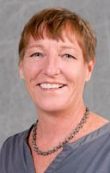
“For all the benefits of Strategic Doing, a comprehensive marine debris reduction plan will still need to be created to make sure all the important marine debris issues and appropriate activities to address them are recognized,” she said, adding that all of the projects identified at the workshop can be folded into a comprehensive state plan.
She added that the marine debris network is open for more people to join. “It is meant to be inclusive and in fact has to be in order to address the issue with full success.”
Jessica Holleman, volunteer with Ocean Friendly establishments, told Coastal Review Online that she thought the symposium was great.
“We spent the morning learning about the efforts toward creating a North Carolina-wide plan for marine debris reduction and then we broke off into groups to work on action plans,” she said. “The group I was a part of was composed of a wide variety of volunteers, educators and park rangers. We came up with a plan to create child-developed PSAs for the local news channels.”
Holleman said that since the symposium, her group has begun woking on their project and other groups have also started working on theirs too.
“I feel that the setup of the marine debris workshop helped set us all up for success, we were able to start implementing what we learned in our groups immediately upon leaving that day,” she added.
While the small groups are going ahead with their selected projects, the planning team, Hallas told Coastal Review Online, is wrapping up the assessment document, “The State of Marine Debris in North Carolina: An Assessment of Prevention and Removal Efforts,” with feedback and input received at the Feb. 8 workshop.
Hallas explained that the momentum to get the marine debris plan off the ground came from Todd Miller, the federation’s executive director, and the staff, who have been working on the problem with the National Oceanic and Atmospheric Administration’s marine debris program.
“When we were reflecting on our work and noticing we’ve been partnering with NOAA marine debris grant program for several years, we wanted to know if the work we were doing was crucial, or if there were other projects of more importance that we should be giving our time and resources to,” she explained.
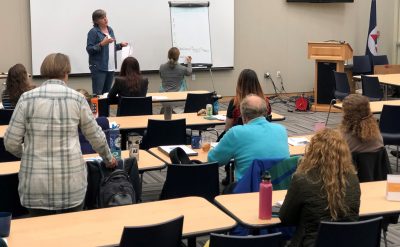
“In order to understand how the federation’s work fit into the bigger picture of marine debris on the North Carolina coast, we needed to know what everyone else was working on to determine if anything was being over looked,” she said, adding they began noticing other states were developing more coordinated marine debris plans, and knew North Carolina would benefit by doing the same.
“Just before this thought process took place, we saw NC Big Sweep dissolve and recognized there wasn’t any statewide facilitator to take the lead for North Carolina, and thought we’d have to take this into our own hands to find out for ourselves if the work we were doing was truly the most important,” Hallas added. “Simply put, we need to have an understanding of who’s doing what and why, in order to see what may be missing.”
Hallas continued that once they move past the basics of collecting and compiling information, the federation plans to dig deeper into policies behind the issue and work toward prevention and encouraging behavioral changes to make real strides in making a difference.
“We’ve already identified that many organizations hold volunteer cleanups, but this could be an endless battle. We don’t want to just keep picking up after each other. We want to get to the source and prevent it from getting there in the first place. It’s also a bigger problem than these items of consumer debris that are visible at the surface, including microfibers and abandoned vessels,” she said. “We are keeping ourselves motivated by imagining a coast where people and wildlife never encounter marine debris. I hope I can see what that looks like in my lifetime.”






